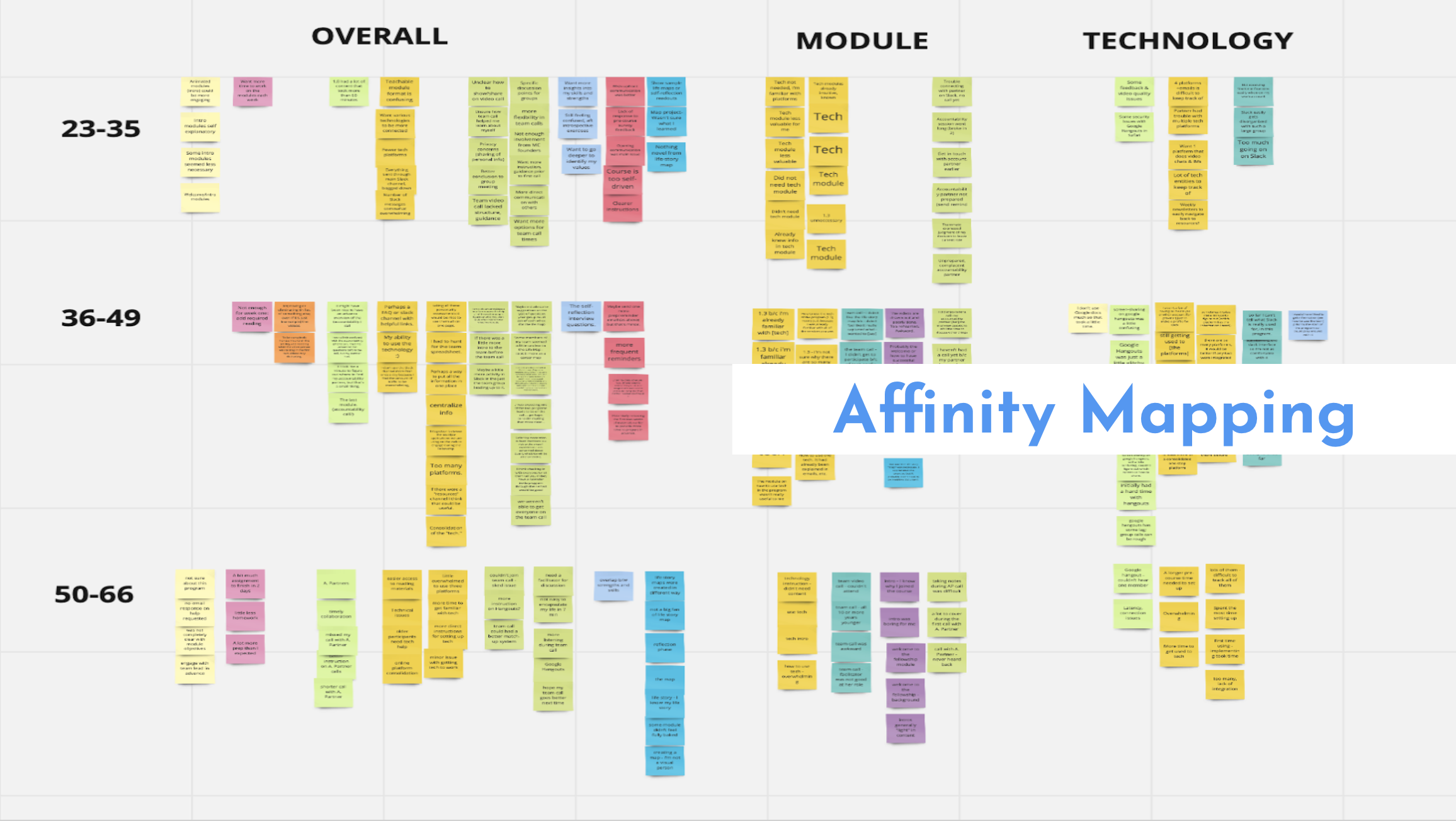MISSION COLLABORATIVE
PROJECT OVERVIEW
Client: Mission Collaborative, an education start-up that offers online career change programs for working professionals who are feeling stuck and/or unfulfilled with their current job but are not sure how to chart their next steps.
Task: To provide an assessment to the client, which was to include recommendations on improving both the high-level journey as well as other key components of the customer experience based on the research and analysis of the following client-provided resources: client website, educational platform site, and sample of participant data.
Challenge: The large scope of the project for a short timeline, which required us to prioritize which assessments to focus on for the client.
My role: User Researcher
Team: Two other UX designers
Duration: 3 weeks
This was a service design project in which I and my teammates comprehensively reviewed the customer experience for users of an online career change coaching service. I utilized my design process that included creating personas and user journeys from user data as well as conducting accessibility evaluations of our client’s website and learning platform.
MY PROCESS
Phase 1: User Research
We started our process with user research, which included screener surveys, user interviews and interpreting survey data that our client provided us using affinity mapping.
User Interview Process
Screener Surveys
Key Questions:
How satisfied are you with your current or most recent job?
Are you looking to change jobs or find a new job in the foreseeable future?
Have you made a career change in the past?
Have you ever used an online learning platform? (Choose all that apply)
*The survey respondents were also asked whether they could be contacted individually for follow-up questions.
Total Number of Responses: 92
Interviews
Number: 15 interviews conducted
Method: In-person or via video chat
Average Length: 15 minutes
Participant Data
Ages:
22-35: 12
36-49: 2
50-66: 1
Gender:
Females: 10 (67%)
Males: 5 (33%)
Key Interview Takeaways
Difficulty of job change process
Rewards for putting in the hard work to change to something that’s a better fit
Challenges & benefits of online and in-person courses
Client-Provided Survey Data
Affinity Mapping
Key Pain Points - Fellowship:
Users had difficulty using multiple tech platforms
Some users had difficulty with Google Hangouts
Some modules are less useful for users
Week 4 has a tough workload/conflicts with holidays
Phase 2: Customer Journey Maps
Empathy Maps & Personas
We began by creating empathy maps to represent what different Mission Collaborative clients would be thinking and feeling, including what they were looking to gain and what their pain points are.
My teammates and I then each built out a persona for a user in a specific age range.
I created the persona for Brittany Gonzalez, a woman in her early 30s who is looking to change careers.
User Journey Maps
These are questions that my team and I asked in order to build out journey maps for users:
“What are they being tasked with?”
“What are their needs?”
“What are the emotional high/low points along with the tasks involved?”
“What are the functional high/low points along with the tasks involved?”
We created a journey map for each of our personas.
Three user journey maps we created to map the journeys of Mission Collaborative clients in different age ranges based on survey data provided to us by the client.
Accessibility Recommendations
Improve Keyboard Accessibility
→ Remove keyboard “traps” and clearly denote what elements are selected when using a keyboard.
Improve Visual Accessibility
→ Improve contrast and other accessibility features.
Reorganize Content
→ Put emphasis on the most important actions and elements and clarify navigation and meaning of content.
Remove errors in code.
→ Make sure no elements obstruct others and all links lead where intended
Challenges and Takeaways
The project had a large scope for a short timeline.
We addressed this by prioritizing what we could provide to the client.
We spent time conducting interviews of our target user type, which I realized near the end of the process that for this particular project did not have the highest value added for the time they took us to conduct. If I were to do this project again, I would not do interviews at the beginning.







